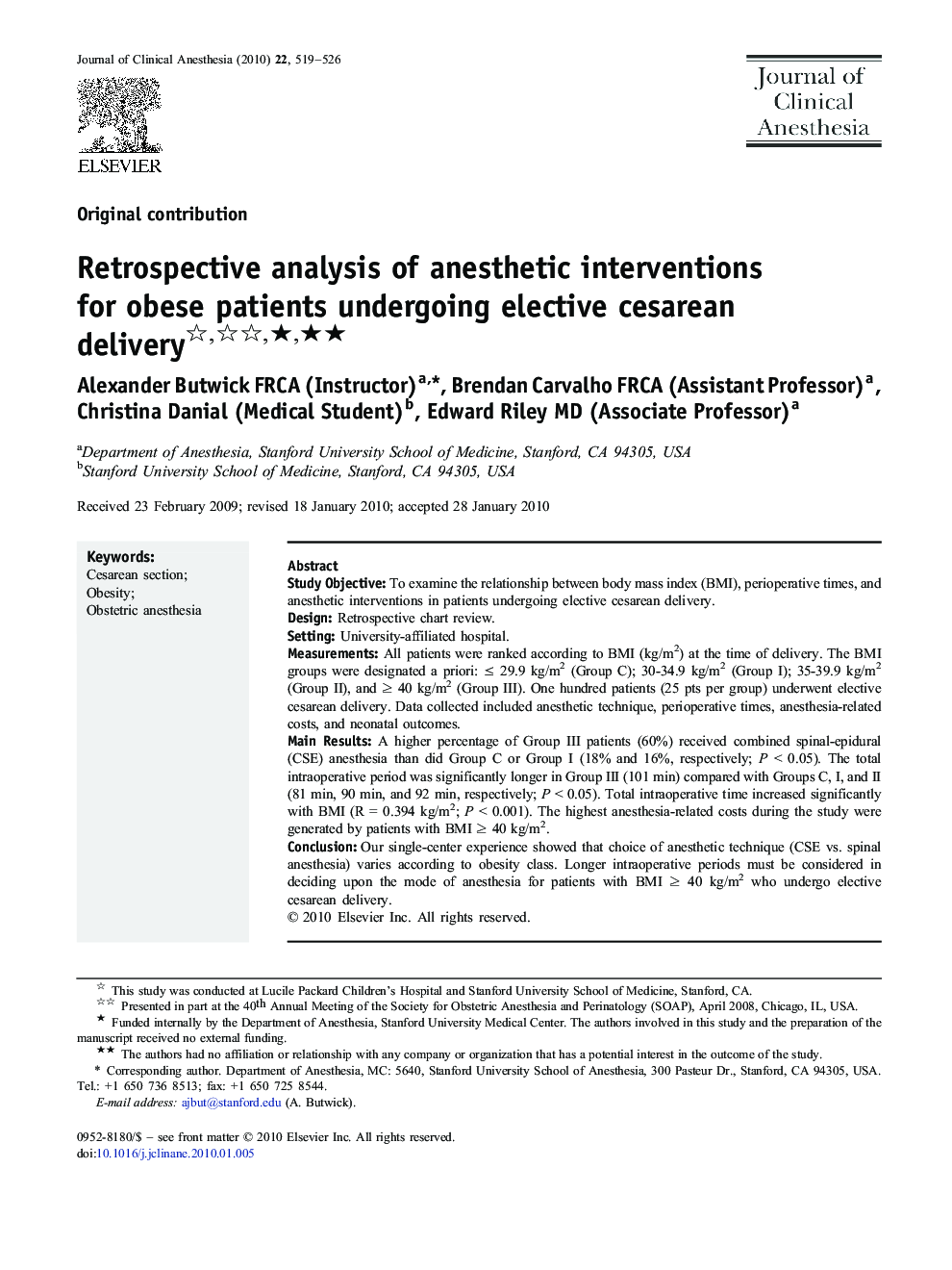| Article ID | Journal | Published Year | Pages | File Type |
|---|---|---|---|---|
| 2762938 | Journal of Clinical Anesthesia | 2010 | 8 Pages |
Study ObjectiveTo examine the relationship between body mass index (BMI), perioperative times, and anesthetic interventions in patients undergoing elective cesarean delivery.DesignRetrospective chart review.SettingUniversity-affiliated hospital.MeasurementsAll patients were ranked according to BMI (kg/m2) at the time of delivery. The BMI groups were designated a priori: ≤ 29.9 kg/m2 (Group C); 30-34.9 kg/m2 (Group I); 35-39.9 kg/m2 (Group II), and ≥ 40 kg/m2 (Group III). One hundred patients (25 pts per group) underwent elective cesarean delivery. Data collected included anesthetic technique, perioperative times, anesthesia-related costs, and neonatal outcomes.Main ResultsA higher percentage of Group III patients (60%) received combined spinal-epidural (CSE) anesthesia than did Group C or Group I (18% and 16%, respectively; P < 0.05). The total intraoperative period was significantly longer in Group III (101 min) compared with Groups C, I, and II (81 min, 90 min, and 92 min, respectively; P < 0.05). Total intraoperative time increased significantly with BMI (R = 0.394 kg/m2; P < 0.001). The highest anesthesia-related costs during the study were generated by patients with BMI ≥ 40 kg/m2.ConclusionOur single-center experience showed that choice of anesthetic technique (CSE vs. spinal anesthesia) varies according to obesity class. Longer intraoperative periods must be considered in deciding upon the mode of anesthesia for patients with BMI ≥ 40 kg/m2 who undergo elective cesarean delivery.
